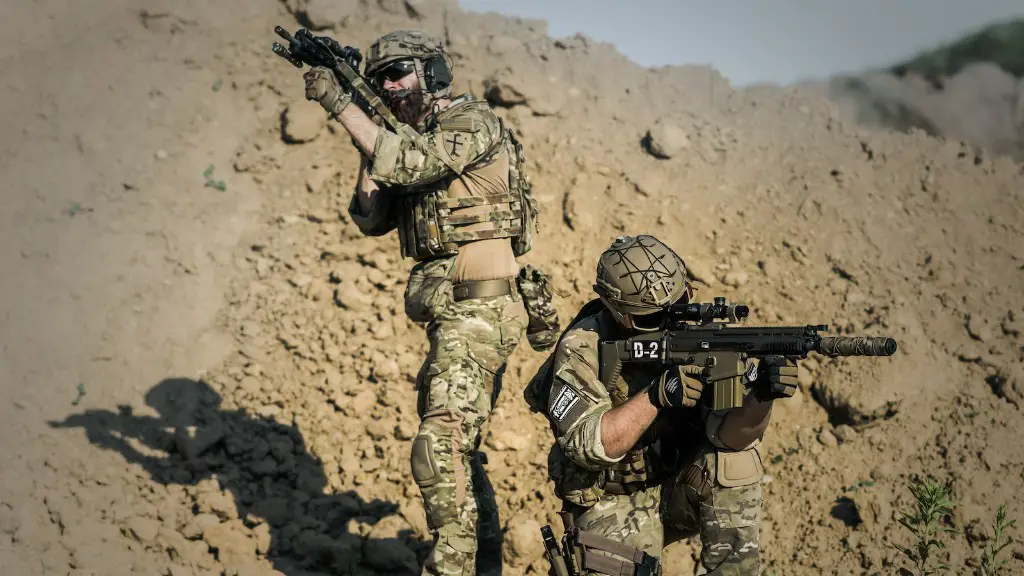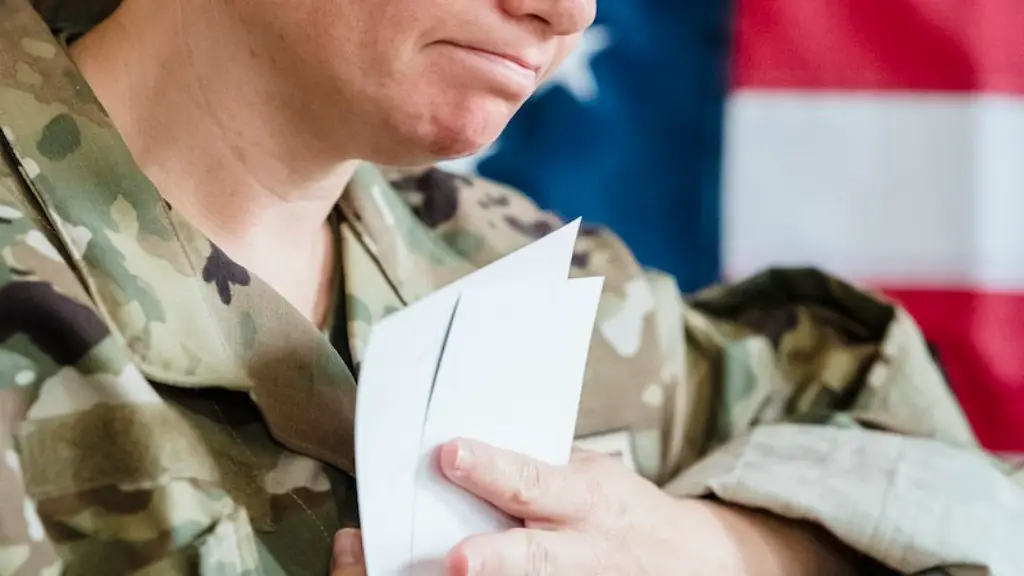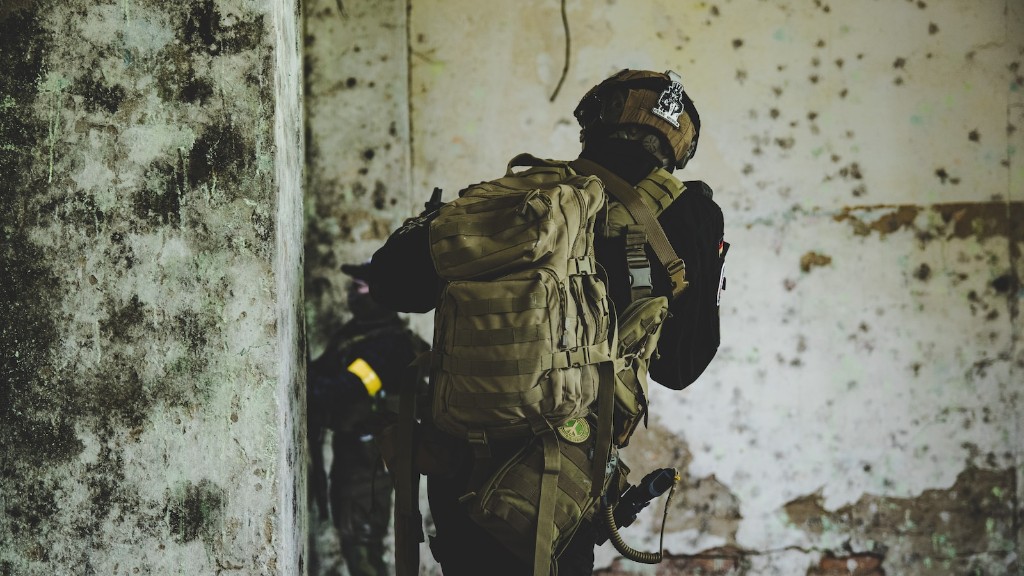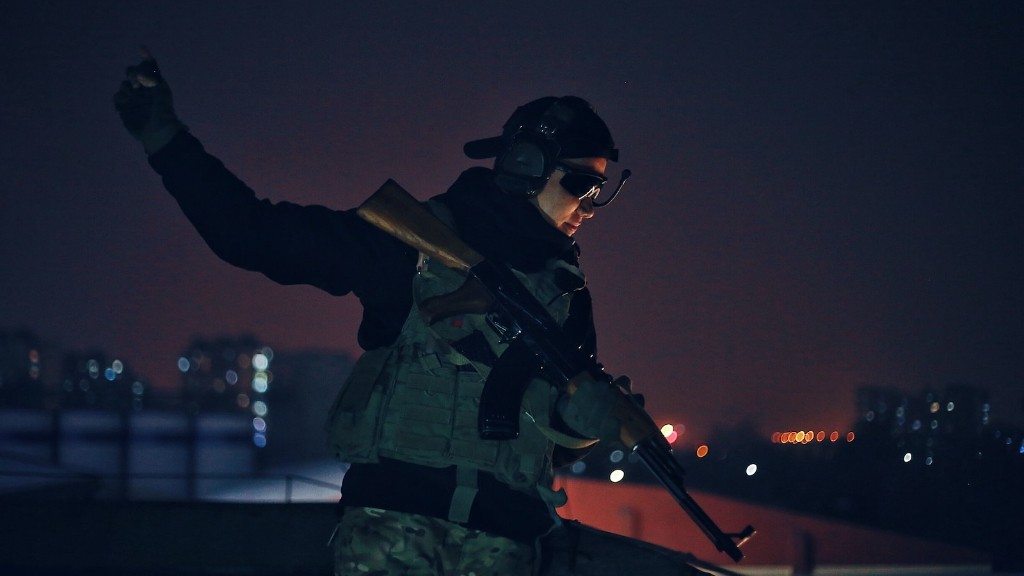Composition of the Chinese Army
The People’s Liberation Army (PLA) is the military of the People’s Republic of China (PRC). It is divided into five sub-branches: the Ground Force, Navy, Air Force, Rocket Force, and Strategic Support Force. The size of the Chinese Army varies year to year and is influenced by a number of factors, such as the size of the country’s population and total GDP. According to the International Institute for Strategic Studies (IISS), as of 2019 the PLA includes approximately two million active personnel and another two million within reserve and auxiliary forces. In essence, the Chinese Army is the largest army in the world.
Factors Influencing the Size of the Chinese Army
The size of the Chinese Army is affected by a number of factors. Firstly, China’s population is the largest in the world, boasting 1.4 billion people. This allows China to have a large reserve of potential recruits and maintain a large standing force. Secondly, the Chinese government has increased its military spending in recent years, spending an estimated US $228.9 billion on the PLA in 2019. This is the second highest amount of military expenditure in the world, following the United States. Finally, China’s economic growth has been steady in the past decade, allowing it to bolster its military capabilities.
The Chinese Army is also aided by its comprehensive training program. The PLA recruits and trains personnel from all walks of life, ranging from graduates of prestigious universities to university dropouts, farmers and factory workers. Training includes a combination of military and political education, physical fitness training, and technical training. The aim of this program is to develop a well-rounded individual capable of performing a wide range of military duties.
Modernization of the Chinese Army
The Chinese Army has undergone significant modernization in recent years. In an effort to keep pace with its rivals, the PLA has developed and acquired a broad range of modern weapons and equipment. This includes land-based equipment such as tanks, armoured personnel carriers, and artillery, as well as combat aircraft, warships and submarines. The PLA has also embraced technology and is incorporating artificial intelligence, machine learning and robotics into its military operations.
The Chinese Army has also placed an emphasis on reforming its command structure. The PLA’s combat units have been reduced in size and their roles changed. In addition, the PLA has taken measures to reduce its support structure, eliminating personnel and administrative redundancies. This has allowed it to become a more nimble and efficient force.
China’s Military Objectives
China’s military objectives are to uphold the country’s sovereignty, protect its interests, and maintain regional stability. To achieve these objectives, the PLA has been actively engaged in military exercises and operations to ensure that its forces are ready and capable of responding to a wide range of threats. These exercises have included joint exercises with the militaries of Russia, Pakistan, India and other countries.
The PLA has also been active in international peacekeeping missions, deploying troops to countries such as Sudan, Lebanon and Haiti. In addition, the Chinese Army has established several foreign military bases in countries such as Djibouti, Kazakhstan and Pakistan. These bases have been constructed primarily for logistics and training purposes, although observers have noted that the bases could act as a springboard for future military operations.
Chinese Nuclear Forces
The Chinese Army also maintains a sizable nuclear force consisting of ballistic missiles, submarines and nuclear-capable bombers. The PLA’s nuclear arsenals are designed to deliver “assured destruction” to its enemies and are maintained as a deterrent to military aggression and coercion. In addition, the Chinese Army is heavily involved in the development of “asymmetric” weapons such as hypersonic missiles, anti-satellite weapons, and cyber capabilities. These weapons are designed to give China an edge on the battlefield and are seen as a counter to the US’s technological superiority.
Impact on International Relations
The Chinese Army is garnering significant attention from the international community. Its rapidly modernizing and increasingly aggressive posture has raised concerns from its regional neighbours. US President Donald Trump has also accused China of militarizing the South China Sea, a claim that has been rejected by the Chinese government.
The Chinese Army’s rise has also had a significant impact on regional security dynamics. Countries such as Japan and South Korea have sought to strengthen their military capabilities in order to counter the perceived threat posed by China. In addition, other countries, such as India and Australia, have also sought to increase their military ties with the US to counterbalance China’s growing power and influence.
PLA’s Strategy on Taiwan
The Chinese Army’s strategy towards Taiwan is one of the most contentious issues in the region. China claims that Taiwan is part of its territory and has adopted an increasingly aggressive posture towards the island. It has conducted military exercises near Taiwan’s coastline, conducted cyber-attacks against the island, and built up its military capabilities in the region.
China has also formulated a strategy of “combined operations” that would involve the employment of its air, missile, naval and cyber forces to achieve its objectives. This includes a plan to isolate Taiwan diplomatically and politically, as well as to blockade the island economically.
PLA’s Relationship with Other Militaries
The Chinese Army has established military relations with a number of countries around the world. This includes ties with Russia, India, Pakistan, Nepal and Bangladesh. In recent years, the PLA has also conducted joint exercises with the militaries of the United States, United Kingdom and Australia, signalling its desire to be seen as a responsible actor in the international system.
The PLA has also become more involved in international fora. It has become a member of the United Nations Helicopter Unit and has established itself as a major player in regional security mechanisms, such as the Shanghai Cooperation Organization and the ASEAN Defence Ministers Meeting Plus.
Military Tensions between China and the United States
The Chinese Army’s growing power and influence have strained relations with the United States. The US has accused China of carrying out military activities that threaten regional stability, such as the militarization of disputed islands in the South China Sea and encroachment into the airspace of other countries. In response, the US has increased its military presence in the region and imposed sanctions against Chinese companies and individuals.
The two countries have also clashed over cyber-espionage and trade issues. In 2019, the US banned the use of certain Chinese telecoms and tech companies, such as Huawei, in its market, citing national security concerns. This has led to a rising trade war between the two countries, with both sides imposing tariffs on each other’s products.
Conclusion of China’s Military Modernization
China’s military modernization has established the PLA as the world’s third-largest military and most populous army. Its modernization has allowed it to maintain a qualitative and quantitative advantage over its rivals and develop new asymmetric capabilities. However, this modernization has placed the Chinese Army on a collision course with the US and its allies, leading to increased tensions in the region.




